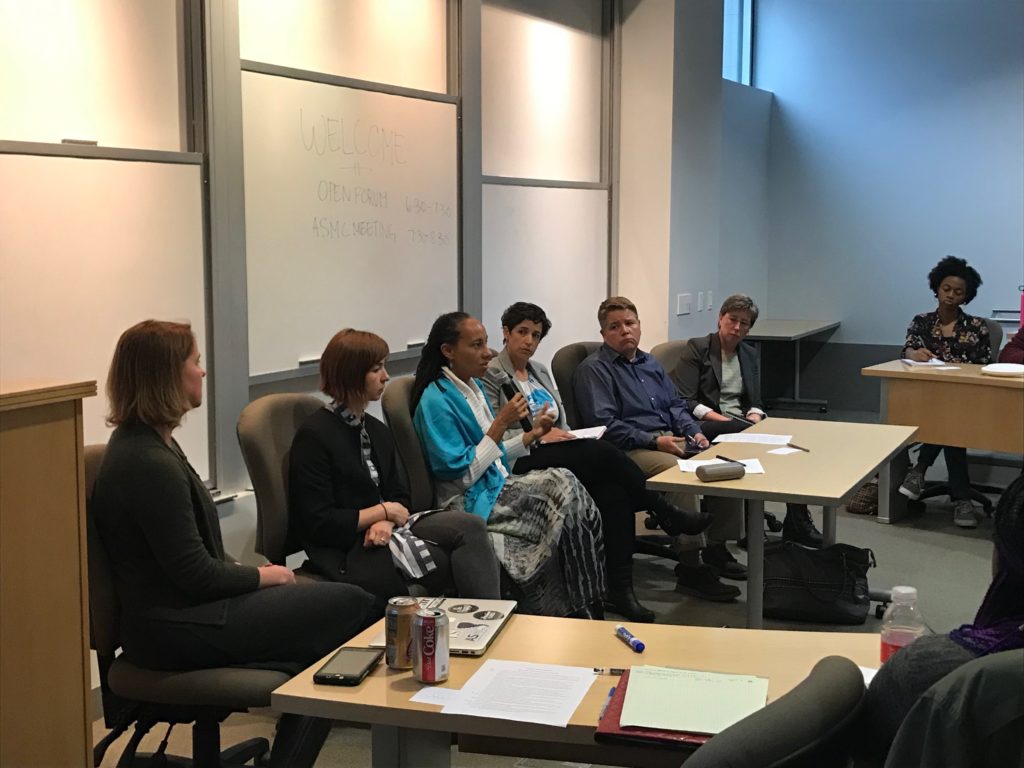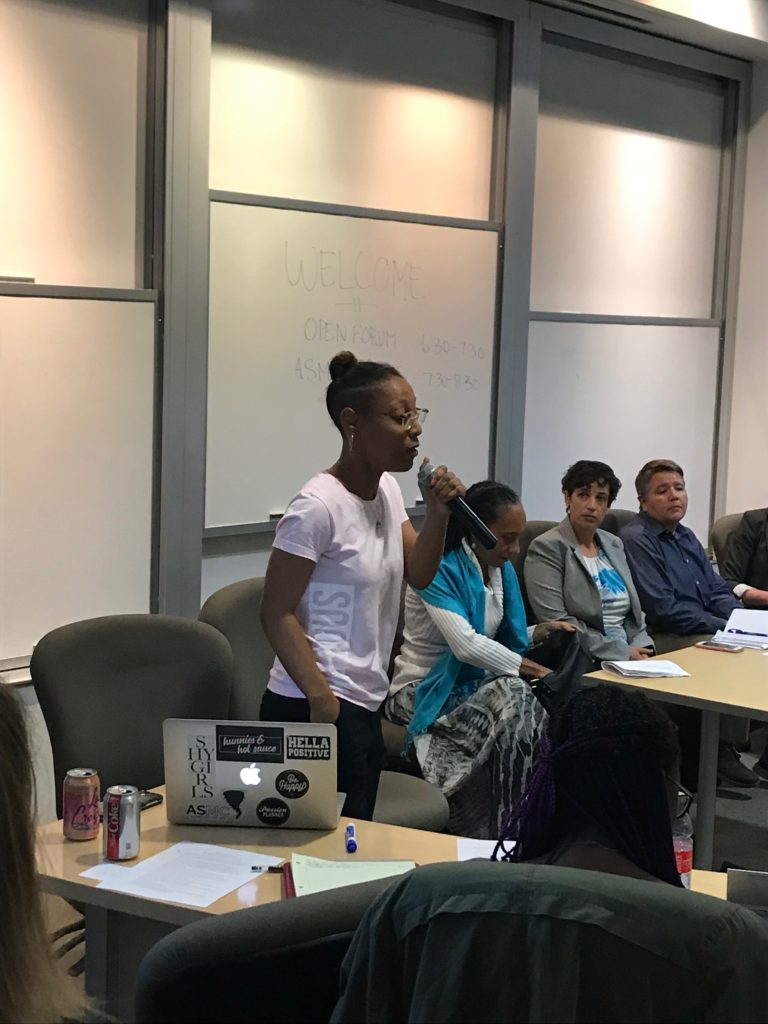On April 8, the Associated Students of Mills College (ASMC) held a second Open Forum at the Lorry I. Lokey School of Business and Public Policy. Attendees discussed the impact of on-campus incidences that brought up concerns of racism and also the succeeding responses from campus leadership.

Members of Mills administration and the art department were present to address the questions and concerns of students, faculty and staff.
In the most recent incident, from Feb. 12, four pieces of rope, each ending in a loop with a running knot, hung from a tree near the Art Museum loading dock. No contextual signage existed and to members of the Mills community the cords appeared to be nooses. Students reported the scene to campus authorities and the ropes were subsequently removed.
“I very much regret the harm that this incident caused to so many people on our campus and at the same time I welcome the opportunity for learning and deeper understanding that this has brought for us,” President Elizabeth Hillman said. “We’re not done acknowledging the harms of the past or correcting the policies and practices.”
In addition to Hillman, the Provost and Dean of the Faculty Dr. Chinyere Oparah, Vice President of Student Life and Dean of Students Dr. Chicora Martin, Associate Provost for Recruitment and Student Success Dr. Margaret Hunter, Art Museum Director Stephanie Hanor and Assistant Professor of Studio Art Yulia Pinkusevich constituted the open forum’s panel.
Black Student Collective (BSC) president, Imani Smith, and Jocelyn Robinson represented the organization. Robinson is also the Mills graduate coordinator for Resident Life and part of the National Black Association.

Hanor said that the rope had been part of placing a Master of Fine Arts (MFA) student’s art installation in the area. The art proposal described a thin stainless-steel hoop, 12 feet in diameter, suspended off the ground and supported by multiple trees. Strips of curtain-like material would then drape down from the metal circle.
“Her intention I think was really to create a kind of meditative contemplative space within that circle. Something that she would be interested in doing performances, working with graduate students from the dance department to interact with the piece during the run of her thesis show,” Hanor said. “She was interested in trying to figure out how to actually do that structurally.”
MFA students develop their thesis exhibition working with a faculty committee. Hanor helps these students think about space and placement, based on their art proposals, in and outside of the Art Museum. This specific MFA student had permission from facilities and the campus architect, in addition to Hanor.
In response to the harmful impact the Mills community has been communicating, the art department implemented a specific signage form. Pinkusevich said that installations placed in public view need to include signage that contain, for example, the artist’s name, a description of the art and an image of its final intended outcome.
In 2014, a purposefully racist message, aimed at black students on campus, had been posted to the then Mills Confessions Facebook page. The Black community at Mills ended up creating a list of 10 demands that year, updated in April 2016, that included calls for clear procedures on handling faculty, staff and students that demonstrate racism, faculty and staff racial bias training each semester, and guidance on institutionally supporting students of color before, during and after such incidences.
“After speaking with the Black community affected by the incident, including those on our board, we’ve determined that there is a lack of appropriate and timely information, lack of spaces for the black community to express our feelings, and lack of clarity regarding the policies in place when incidents like these occur,” Smith said in a prepared statement.
Smith further said that, for the past three years, Mills administration has not updated them on the progress towards achieving the 2014 demands. She, therefore, called upon them to post an update to the new portal page by May 8, and communicate again, in Fall 2019, on outstanding demands.
“I worked with the group who worked on the report to support and retain Black identified students. So, I agree wholeheartedly that an update is warranted and needed and regardless of where we are with those, I think that’s an opportunity,” said Martin. “In fact, staff within the division are already working with the Equity, Inclusion and Social Justice Committee on that update so its our goal to provide some additional information before the end of the semester.”
Throughout the open forum, Mills administration shared examples, such as establishing the Mills Equity, Inclusion and Social Justice Committee, of their commitment to working on the college’s response to racism and the building of a more proactive campus culture. At the same time, they acknowledged that there are opportunities to continue building and refining these efforts.
ASMC has scheduled a Join All Mills (JAM) for April 30 from 1:00 to 3:00 p.m. To help address various on-campus tensions, Rowena Brown, ASMC Vice President and Diversity Chair, is reaching out to Mills infinity groups to organize this event as a collaboration.
Student government has also affirmed their focus to follow up on getting the list of student’s demands met and to continue dialogue with campus authorities, such as the Board of Trustees and Mills administration.
Questions and comments can be e-mailed to them at asmcpresident@mills.edu and/or asmcvp@mills.edu.
“I’m personally committed to continuously improving Mills responses on this, and I pledge that we’ll keep trying to do that,” Hillman said. “I personally will keep trying to do better and that Mills will keep trying to do better.”
